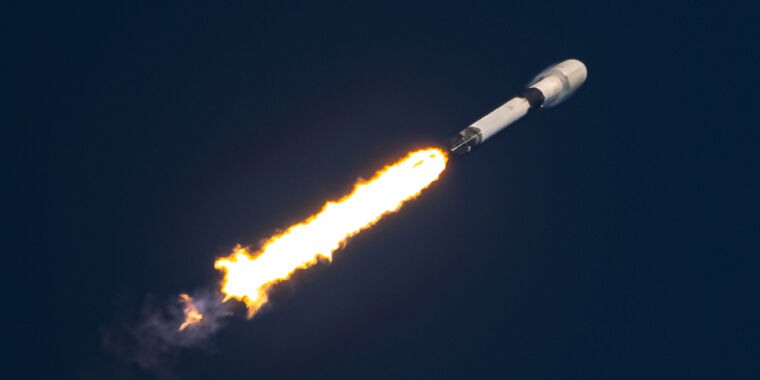
SpaceX continues to advance as it goes beyond the limits of reusing the first stage of its Falcon 9 rocket.
On Wednesday morning, the company plans to launch its next batch of 60 Starlink satellites, reusing booster # 1051. This will in fact be the eighth flight of this first stage Falcon 9 rocket – setting a new record for the number of use of any single rocket core. SpaceX expects to reach the 10-use mark for at least one first stage of Falcon 9 later this year.
The next launch attempt is also notable because it would represent a quick turnaround for this first phase. The rocket last flew on December 13, launching the Sirius XM-7 mission into geostationary transfer orbit. This 38-day period would significantly exceed the previous recovery margin for a first stage of Falcon 9, which is 51 days. This suggests that the company’s engineers and technicians are continuing to learn about best practices for recovering and refurbishing rockets.
The Starlink mission is scheduled to launch at 8:02 am EST (1:02 pm UTC) on Wednesday at the Cape Canaveral Space Force Station in Florida. Its launch was originally postponed for 24 hours from Monday due to unfavorable weather conditions in the offshore recovery area, where Just read the instructions will wait for the return of the first stage. The company then postponed the mission another day, saying more time was needed for “pre-launch inspections”. It is not clear whether this refers to the rocket or the payload.
This will be the 16th launch of “operational” Starlink satellites, in addition to a previous launch of test satellites. As the largest satellite operator in the world, this mission will bring the total number of Starlink satellites launched by SpaceX to over 1,000. Some of these satellites are no longer operational and are in the process of withdrawing from orbit or have already done so.
As SpaceX began building this constellation, it began offering a public beta to select areas in North America and is expected to offer broader coverage later this year. First impressions are generally positive.
At the same time, SpaceX has also been working to address the concerns of scientists who are concerned that large constellations of satellites delivering Internet from space will spoil the night sky and undermine astronomical observations. Last year, the company started adding “visors” to reduce the reflectivity of its satellites. However, a recent analysis of these “DarkSats” suggests that more effort may be needed.
Weather conditions for Wednesday’s launch appear favorable for the mission, both at the launch site and in the recovery zone. The SpaceX broadcast should go on air about 15 minutes before takeoff.
Launch of Starlink.
